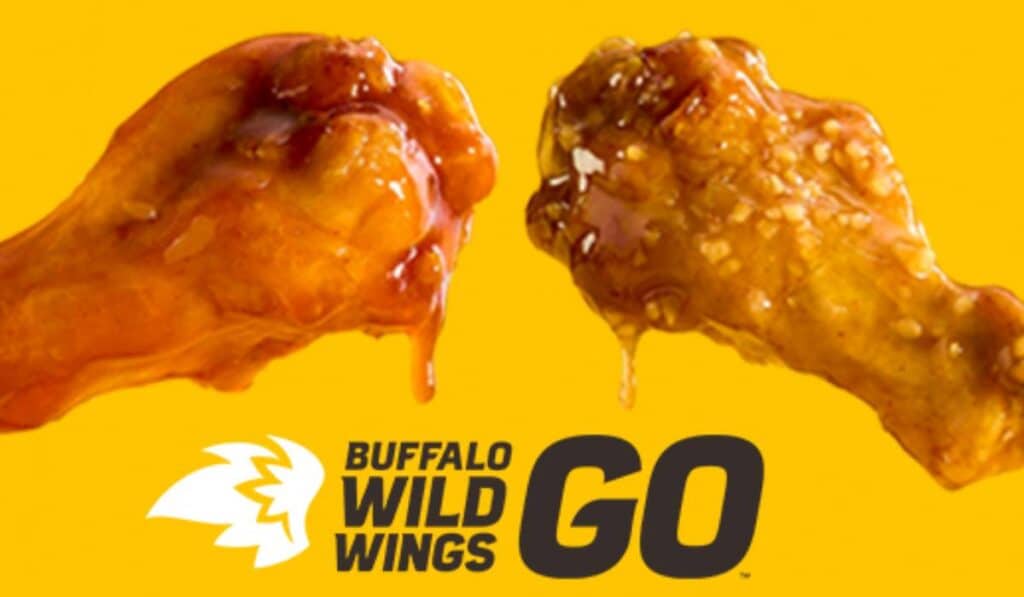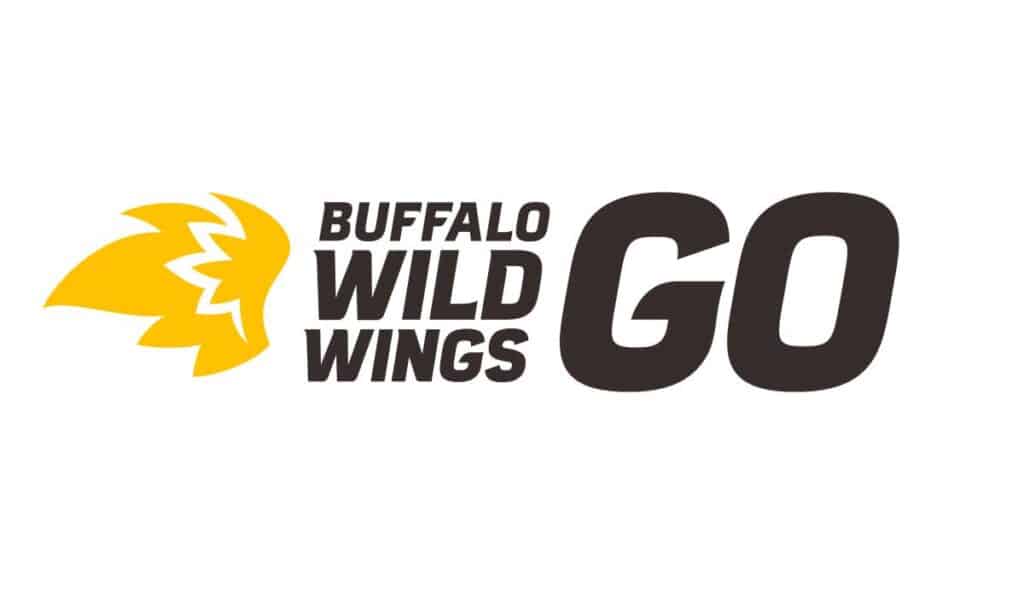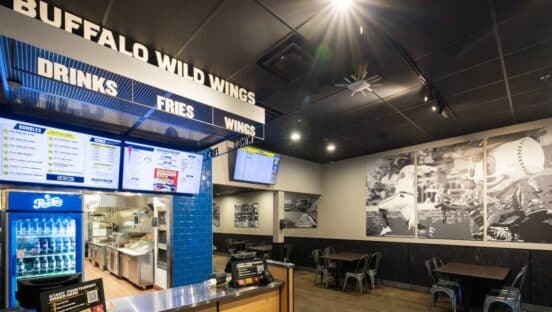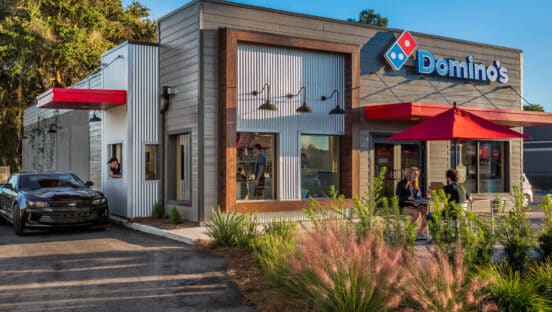In some respects, the growth story of BWW GO—Buffalo Wild Wings’ counter-service offshoot—has felt clandestine. The brand just celebrated its 100th standalone opening in New York City by cutting the ribbon and giving the first 100 guests a booklet redeemable for free wings for a year.
And while reaching triple-digit units is no mean feat, the quiet approach was by design. Inspire Brands wanted to lead the project before it unlocked the floodgates, running, as it does across the organization’s portfolio, stores from the corporate side before spurring franchise growth.
That inflection point has arrived. BWW GO expects to close 2024 with 150 stores and today boasts commitments for nearly 600 more locations, Buffalo Wild Wings brand president John Bowie shares with QSR. And it’s looking to sign another 350 this calendar.
At the start of 2021, there were zero standalone BWW GO franchises. There was just one to begin 2022 and four before 2023. That number reached 31 by year’s end.
On the company side, though, Inspire built 15 in 2021, had 37 the following year, and exited 2023 with 48. In all, BWW GO went from 16 total locations to 79 before January 1, 2024. As mentioned, the figure is up to 100, with 150 in sight.
What’s unique about BWW GO and its whitespace, Bowie says, is the jump-off point, which, naturally, is 1,300-unit Buffalo Wild Wings itself. All of those venues will now be equipped with GO for takeout and delivery as well. The brand also launched a new Visual ID, a GO branded e-commerce experience, GO-only menu items, and branded creative, most recently seen in this an advertisement during the NCAA Tournament’s Final Four.
The off-premises experience isn’t new at Buffalo Wild Wings—it’s getting amplified and refined.
Back in 2019, the brand had online ordering and an app for loyalty. But 79 percent of its business took place within the four walls.
Naturally, off-premises mix ballooned to 100 percent as COVID darkened dining rooms. Bowie says it has settled in at about a third. So Buffalo Wild Wings essentially more than doubled that bucket in the last five years.
“And the bottom line is we’re operating out of our sports bars a formidable business within a business with our takeout,” he says. “It’s significant volume.”
The idea of BWW GO, or what would ultimately come to be labeled that, was kicked around not only as a reaction to this shifting off-premises reality, but as a way for Buffalo Wild Wings to tap into a new occasion. Could it get closer to guests who made the decision to get takeout?
“We have a whole bunch of upside when it comes to driving consideration for takeout and delivery,” says Tristan Meline, Buffalo Wild Wings’ CMO, who previously served as VP of brand management before elevating in February. “People have historically known us as the place where you come, watch games, drink a beer, eat some wings, it’s a place of social gathering, but we have a great takeout and delivery offering as well. So it’s about driving that penetration and driving that consideration with the consumer about that particular offering.”


The initial standalone BWW GO debuted in 2020 in Atlanta at 1,800 square feet with a walk-up counter, digital menuboards, and a small seating area with TVs to entertain customers while they waited.
Bowie says just 9 percent of the BWW GO standalone business is call or walk-in. The staffing model allows for somebody at the front counter to assist guests whether they’re grabbing food from a cubby (self-service pickup) or ordering at the cashier. It’s really designed, Meline adds, to reflect how consumers have become more digital in their shopping behaviors. BWW GO is a digitally native concept where the majority of transactions flow through ecommerce—the website, app, and third-party delivery. “For most people, the interaction they’re going to have with Buffalo Wild Wings GO will be on their phone,” he says.
And in turn, Meline says, expect to see a lot of the brand in the digital and social advertising space in the months to come. “That’s where you’ll see the lion’s share of our advertising,” he says.
As for interest from franchisees, Bowie notes the reception has been “beyond our expectations.”
The total investment to begin operation of a traditional Buffalo Wild Wings sports bar ranges from $2.44 million to $4.83 million. They cover 3,500–6,500 square feet and seat 155–285 people. Stores last year averaged $3.343 million per unit.
Standalone BWW GO’s opening investment spans from $564,345 to $1.05 million. All reporting restaurants last year, of which there were 60 counted, posted weekly AUVs of $16,549, or in the ballpark of $860,000 per annum.
The 100th BWW GO was brought to market by The Munson Group, which now has four in addition to traditional sports bars and Sonic Drive-In locations in the Northeast (Inspire owns Sonic, Dunkin’, Jimmy John’s, Buffalo Wild Wings, Arby’s, and Baskin-Robbins). Jack Litman, president of the group, said BWW GO’s operational efficiencies, streamlined marketing resources, and “tremendous brand awareness,” are anchoring growth. “Add to that the flexibility of the footprint and the speed to market, and you have a very desirable concept,” he said in a statement.
One of the most telling stats concerns where that 600-commitment pipeline is filling from. Bowie says 85 percent of BWW GO sign-ups have stemmed from existing Inspire Brands franchisees.
“Our interests are their interests,” he says, reiterating the benefit of having skin in the game. “We operate a significant company footprint so people sleep calmly at night knowing that we’re not just trying to drive a top line and pick up a royalty.”
Dunkin’, in particular, represents a pool of operators Bowie says who have been attracted to BWW GO. Their business is more of a morning one, with an afternoon snack daypart added in, while wings track toward evenings and weekends.
BWW GO gives them an inexpensive cost to build and lower barrier of entry to expand offerings. This is especially true, Bowie continues, for Dunkin’ franchisees in penetrated markets where there’s not a lot of headroom to build more stores. “It’s a huge opportunity for them now to rapidly expand their business,” he says.
As The Munson Group explained, the same general notion applies to operators who run traditional Buffalo Wild Wings. BWW GOs present a roadmap to infill areas where dropping additional 6,000-square-foot sports bars might not make sense. However, using BWW GOs to close the radius does, Bowie says. “They can get closer to the consumer and drive convenience,” he says, “and make more money in a particular market.”
Inspire tested these approaches from all sides. It looked at different trade areas, demographics, and proximity to Buffalo Wild Wings sports bars. “If we were going to make a mistake, we wanted to make it on our own dime,” he says. “So when I talk about encroachment to a sports bar we build, how close can we get to one of our company-operated sports bars? What impact did that have? We wanted to understand all of that before we opened it up to franchising.”
The answer was BWW GOs worked wherever population density supported expansion. It didn’t matter if it was a city market or a small town. Philadelphia, New York City, Chicago, Seattle, California, and Texas are near-term targets.
“We still have significant interest internally,” Bowie says. “We have a lot of franchisees, but we only scratched the surface with the number of franchisees that we have [across Inspire]. There’s still a huge opportunity and a lot of the big franchisees who are operating multiple brands are very interested.”
“We refer to them as the top 100 or top 200 franchisees,” he adds, “that aren’t in our system today. We have significant interest from those folks looking to get in and add another brand to their portfolio of franchises. So we have aggressive targets for commitments this year and I don’t imagine that those targets will soften for the foreseeable future.”
Refining the menu was a balance of familiarity and efficiency. BWW GO stores serve a select lineup of high-volume options, like wings, chicken sandwiches, burgers, hand-breaded tenders, and all 26 Buffalo Wild Wings sauces and dry rubs.
Bowie says everything you can get at a freestanding BWW GO is available at a Buffalo Wild Wings. Management looked at the traditional concept’s off-premises mix to see what guests ordered most for takeout. And the menu was constructed from there. “It just worked out at about 90 percent of the product mix that we’re selling to go from a sports bar,” he says. “… That’s what [guests] were purchasing—the most portable foods that we have.”
Something to further highlight as well is that the traditional Buffalo Wild Wings landscape is, as mentioned, now equipped with GO for takeout and delivery. That’s part of the deliberate messaging ahead.
How this generally manifests is as a separate space within restaurants that offer a dedicated counter and door, often adjacent to the bar. Pickup guests or couriers walk in and get their food without having to enter the restaurant proper or flow through the lobby.
Returning to Meline’s point, however, where the brand plans to drive this is from an awareness standpoint. While the term “rebrand” might not fit exactly, Buffalo Wild Wings plans to take its off-premises strengths and hover the spotlight.
“It’s more branding our takeout and delivery business writ large as Buffalo Wild Wings GO,” he says, “to telegraph to consumers that when it comes to takeout and delivery, when you want the best wings and sauces around, Buffalo Wild Wings GO is the brand for you to choose.”
BWW GO as an option, inside traditional sports bars and on their own, are going to become clearer in the guest’s mind, Meline says.
As a marketer, it’s been an enviable project, he adds. BWW GO didn’t spring to life as much as it arrived on the coattails of a massive brand. Meline worked to identify the differentiators that apply specifically to Buffalo Wild Wings’ takeout business, such as 26 sauces and dry rubs and more variety than your general wing joint, and provide them a platform.
The brand’s recent campaign (Hank the Buffalo, which you’ve likely seen during March Madness) is Buffalo Wild Wings’ logo in action. Meline says it gives the brand a voice and more recently, a chance to thrust BWW GO forward. “That’s the linear TV side of it. But we’ve got a huge digital push coming,” he says.
Meline notes the social DNA of Buffalo Wild Wings remains core to the chain’s larger positioning. Standalone BWW GOs are simply an incremental opportunity intended to get in front of customers who trust the brand, but perhaps didn’t plan to go out that night. “They’ve decided they’re going to stay at home and they’re just trying to figure out who to order from,” he says. “For us, the opportunity is to take that incremental occasion and incremental consumer who isn’t choosing between the two.”
Those BWW GOs won’t pull customers from the sports bar. It will bring the brand to guests who aren’t going to Buffalo Wild Wings that night.
“We still love our dine-in business,” Bowie says. “It’s strong and we’re going to continue to build sports bars. We have a lot of head room from coast to coast and continue to build, and we’re very bullish on that business as well. This is just more of a penetration opportunity for us to get closer to consumers who have made that decision first and foremost. I’m eating my wings at home. So I want to get them in the most convenient way.”
And that vision will include nontraditional as well. The first airport location of BWW GO is headed to Boston in June. Bowie says airports draw major potential. So do colleges and universities, perhaps even more so. “We work closely with them and all the other brands that the contract feeders that have full food and beverage contracts with the school to bring us into the portfolio—they’re licking their chops,” he says.





